
- Articles
America, guns, and freedom. Part I: A recapitulation of liberty by Miguel A. Faria, MD
The role of gun violence and street crime in the United States and the world is currently a subject of great debate among national and international organizations, including the United Nations. Because the Second Amendment to the U.S. Constitution protects the individual right of American citizens to own private firearms, availability of firearms is greater in the U.S. than the rest of the world, except perhaps in Israel and Switzerland. Indeed, although the American people continue to purchase and possess more firearms, homicides and violent crimes have continued to diminish for several decades because guns in the hands of the law‑abiding citizens does not translate into more crime. As neurosurgeons, we can be compassionate and still be honest and have the moral courage to pursue the truth and find viable solutions through the use of sound, scholarly research in the area of guns and violence. We have an obligation to reach our conclusions based on objective data and scientific information rather than on ideology, emotionalism or partisan politics. — Abstract
Before a standing army can rule, the people must be disarmed; as they are in almost every kingdom of Europe. The supreme power in America cannot enforce unjust laws by the sword; because the whole body of the people are armed, and constitute a force superior to any band of regular troops that can be, on any pretence, raised in the United States.
Noah Webster, an examination of the
Leading Principles of the Federal Constitution, 1787.
DATELINE: WARSAW, POLAND, 1943
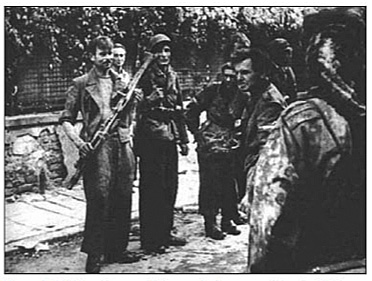
In the Spring of 1943, the inhabitants of the Warsaw Ghetto, having become aware the Nazis were deporting the remaining Jews to the gas chambers of Treblinka, took up arms, whatever they could find, and rebelled against the German occupiers. These determined insurgents had only homemade Molotov cocktails and a handful of small arms, revolvers, pistols, and a few military or hunting rifles. It took vastly superior Nazi forces to subdue the rebels, and the Germans suffered up to 300 casualties in pacifying the city.[6]
There were several other armed struggles and Ghetto uprisings, and the Poles and Warsaw remained a serious problem for the Germans during the remainder of the war. The Polish Jews continued to procure whatever arms they could find to defend themselves in their struggle, repeatedly disrupting the timetable of the Nazi high command and the German war effort [Figure 1].

The last major Polish uprising in August 1944 was to be launched in concert with the liberating Soviet Red Army. But, the advancing Red juggernaut suddenly and inexplicably halted. Advised by General Georgi Zhukov, Stalin rejected the appeals of the Western allies to assist the insurgents. For 2 months, the courageous Poles fought the Nazis in heroic, urban warfare without any assistance [Figure 2]. Stalin had simply halted the advance of the giant Red Army to allow the Germans to destroy the non‑communist freedom fighters: 200,000 Poles perished and 800,000 were deported to the death camps.[4] Warsaw was erased by orders of Adolf Hitler, and the Soviets at the outskirts of the city did nothing.[42]
DATELINE: BUDAPEST, HUNGARY, 1944
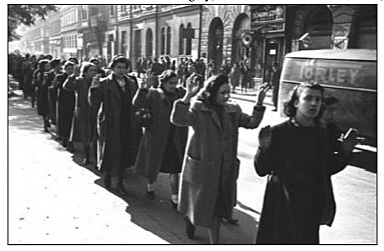
During the summer of 1944 in the ongoing carnage of World War II, German troops were retreating on multiple fronts. Hungarian allied troops were defending the motherland from the onslaught of the Soviet Red Army, yet in the midst of the chaos, nearly 500,000 Hungarian Jews were rounded up and deported to the Nazi death camp Auschwitz‑Birkenau, where 90% of them were summarily exterminated in the gas chambers. A reign of terror ensued for those who remained in Hungary; thousands of them were tortured, robbed, or murdered; Jewish women were raped; property was looted or confiscated.[25] These atrocities were carried out with a minimum of Nazi troops. While seated in a restored synagogue in Budapest a few months ago, a friend of mine listened in utter disbelief as this story was recounted. How could this have happened? How could these atrocities have been carried out with only a minimum of Nazi troops? The Hungarian state had outlawed the possession of firearms for its citizens. Simply put, this happened without resistance because the Hungarian people had been disarmed [Figure 3].
DATELINE: HAVANA, CUBA, 1959
And here is a story with which I am intimately familiar. After the triumph of the revolution in 1959, Fidel Castro reneged on his promise to establish democracy in Cuba. In response, the Revolutionary Directorate (RD), the opposing, non‑communist group, threatened to renew the insurrection against the Castro brothers’ revolutionary government. To back their demands with substance or perhaps even expecting a showdown, the RD seized arms from the San Antonio de los Baños Air Force Base in the western part of the island.
Fidel Castro reacted characteristically in a speech at the Maestre Barracks of San Ambrosio, artfully commanding the situation by accusing the RD of seizing the arms and then, in a masterpiece of rhetoric, asking: ¿Armas para que? ¿Para luchar contra quién? ¿Contra el gobierno revolucionario, que tiene el apoyo del pueblo? (“Guns, for what? To fight against whom? Against the revolutionary government that has the support of the people?”). Fidel Castro defused the situation and neutralized the defiance of the RD. Shortly thereafter, Castro commenced his long‑term campaign to disarm not only his confreres in the Revolutionary Directorate who had not joined him, but also, in due time, all Cubans. A 100,000‑member “militia” was organized to seek out the political opposition and actively disarm it.
Unfortunately, they had a well‑drawn blueprint to follow — the local firearm registration lists that the former dictator, Fulgencio Batista, had established. All the milicianos had to do was to seize the registration (licensing) lists and then go door to door searching for and confiscating firearms. The militia tried to disarm my father, a physician, and the episode is recounted in my book Cuba in Revolution — Escape from a Lost Paradise (2002).[8]
During the Batista dictatorship (1953–1958), Cubans were free to leave the country with family, personal possessions, and their wealth, anytime they wished, but not so in communist Cuba.
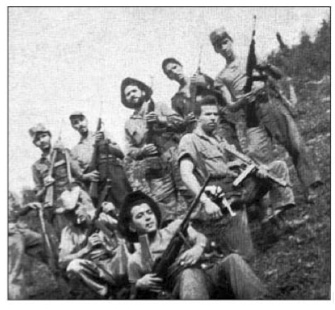
Since Fidel Castro took over the island in 1959, the best figures we can glean are that between 30,000 and 40,000 Cubans were either executed en los paredones de fusilamiento (on the firing squad wall) or died at the hands of their communist jailers. Between 1960 and 1965, hundreds of anti‑communist rebels, many of them former RD members, went back to the hills of the Escambray Mountains in my native Las Villas province to fight the new communist dictatorship of the Castro brothers [Figure 4]. The mostly peasant insurgents, who were defending their lands, lacked sufficient weapons to overcome the well‑armed, communist Cuban military forces. Thus, most of these peasant insurgents were annihilated by 1966.[5,7,8]
Moreover, between 1960 and 1993, 36,000 Cubans perished at sea trying to escape the Castro brothers’ communist inferno. If we include all of those who died escaping the regime, those who were shot or died in custody, the figure well exceeds 100,000. In fact, the late scholar Armando Lago arrived at a death toll of 105,000 victims directly attributed to the regime of Fidel Castro.[5,8]
Countless thousands of other Cubans have died indirectly as a result of Fidel Castro’s collectivist policies, unspeakable privations, malnutrition, and the general desolation of a once prosperous island — the island Christopher Columbus called the “Pearl of the Antilles.”
One day, as it happened in the Soviet Union, we will learn the truth, and more accurate numbers will be available, recording the full extent of the brutality and destruction wrought by communism in Cuba. One reason this happened and Cuba today remains a totalitarian state despite the collapse of Soviet communism is because the Cuban people were disarmed.[5,7,8]
FIREARMS AND THE U.S. CONSTITUTION
The role of gun violence and street crime in the United States and the world is currently a subject of great debate among national and international organizations, including the United Nations (UN). Because the Second Amendment to the U.S. Constitution protects the individual right of American citizens to own private firearms, availability of civilian firearms is greater in the United States than the rest of the world, except perhaps in Israel and Switzerland. But freedom comes with responsibilities. Children should be taught not only the basic academic subjects, but also instructed in civics, constitutional principles of government, and the meaning
of liberty. Simply stated, education is important, and a system of constitutional governance that guarantees individual liberties and protects citizens from disarmament (by their own governments) comes with concomitant responsibilities. The citizens’ necessary civic involvement in the society in which they live is paramount, and it requires that the empowered population remain an informed and vigilant citizenry, the ultimate guardians of their own rights and freedoms.[1,21,35,41]
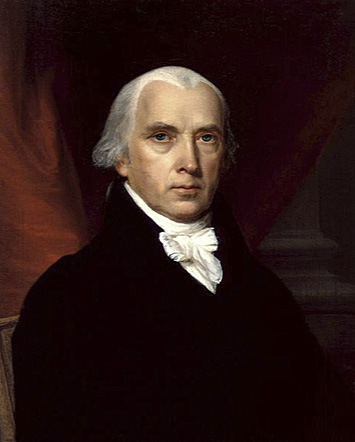
The First 10 Amendments to the U.S. Constitution (i.e., the Bill of Rights) limit the power of government and enumerate certain fundamental, individual rights, so that their enumeration would provide specific protection from the monopolistic tendency of government to wrest power away from (and usurp the liberties of) the individual citizen. The Second Amendment was framed by James Madison, the master builder of the U.S. Constitution, as an essential part of the American Bill of Rights, one of the fundamental, inalienable Natural Rights of citizens guaranteed in the Constitution [Figure 5].
The physician and English philosopher, John Locke (1632–1704), who was greatly admired by the American Founding Fathers, once wrote, “I have no reason to suppose, that he, who would take away my Liberty would not when he had me in his Power take away everything else.” And for his part, Thomas Jefferson added, “The natural progress of things is for liberty to yield and for government to gain ground.” The solution to this dilemma — namely, government as a necessary evil, according to Joseph Story (1779–1845), foremost American jurist and intellectual alter ego of Chief Justice John Marshall — was found in the Second Amendment.
Supreme Court Justice Story thus wrote (1833): “The right of the citizens to keep and bear arms has justly been considered the palladium of the liberties of a republic; since it offers a strong moral check against usurpation and arbitrary power of rulers; and will generally, even if these are successful in the first instance, enable the people to resist and triumph over them.”[37] These are strong words better said by the American Founding Fathers in explaining the reason for the Second Amendment than to be left unsaid to a posterity that may have forgotten why the natural right of gun ownership was written into the U.S. Constitution.
In the last three decades, most American legal scholars — including Second Amendment attorney David T. Hardy, Akil Reed Amar of Yale University, William Van Alstyne of Duke University, Professor Glenn Harlan Reynolds of the University of Tennessee, Sanford Levinson of the University of Texas Law School, Don B. Kates of the Pacific Institute for Public Policy Research, attorney David Kopel of the Independence Institute, and noted Fairfax, Virginia, attorneys Jeffrey Snyder and Stephen P. Halbrook — have concluded that the Second Amendment protects an individual right to keep and bear arms. [2,22‑24,26,31,33,36,40] Nevertheless, gun prohibitionists, in justifying their crusade for gun control in place of crime control, have erroneously maintained that the Second Amendment only permits the National Guard or the police to possess firearms for collective police functions.[10,11,13]
RECENT U.S. SUPREME COURT RULINGS ON THE SECOND AMENDMENT
The U.S. Supreme Court finally confirmed what many of us had believed all along. On June 26, 2008 in the District of Columbia v. Heller decision, the Supreme Court of the United States struck down a Washington, D.C. handgun ban, which had forbidden American citizens from owning and possessing firearms in the District of Columbia. The Court ruled that U.S. citizens have an inalienable, personal right to keep and bear arms in the federal districts of the nation, a preexisting natural right guaranteed in the Second Amendment to the U.S. Constitution.
Then on June 28, 2010 in the McDonald v. Chicago case, the Supreme Court of the United States struck down a similar Chicago handgun ban, reconfirming that the Second Amendment protects an individual right of all citizens to possess firearms in their homes for self‑defense. In the McDonald decision, the U.S. Supreme Court incorporated the Second Amendment as a fundamental right of citizenship applicable to all the states and municipalities of the nation via the Due Process Clause of the 14th Amendment.
Under legal tradition, a constitutional right is protected and inalienable under the 14th Amendment’s Due Process and Equal Protection Clauses, if it is considered a fundamental right, an inherent natural right deeply rooted in American history and jurisprudence.
THE UN SMALL ARMS TREATY
Even before these landmark rulings, Americans had refused to give away their natural and constitutional right “to keep and bear arms.” Nevertheless, many politicians bent on prohibiting gun ownership have tried ingenious ways to curtail gun rights and institute gun control. One legal approach has been to attempt to apply the Treaty power of the U.S. Constitution, using the UN as a vehicle, to circumvent and contravene the same document and disarm Americans.
I refer to the Supremacy Clause, Article VI, paragraph 2 of the U.S. Constitution: “This Constitution, and the Laws of the United States which shall be made in pursuance thereof; and all treaties made, or which shall be made, under the authority of the United States, shall be the supreme law of the land; and the judges in every state shall be bound thereby, anything in the constitution or laws of any state to the contrary notwithstanding.”
While in the landmark case Reid v. Covert (1957), the Supreme Court ruled that the U.S. Constitution supersedes the power of treaties, many left leaning, liberal scholars have tried to circumvent that ruling with creative arguments, claiming the treaty power vested in the Constitution supersedes other internal U.S. laws, even if these are duly enacted laws, and even if the treaty itself contravenes the U.S. Constitution. Other conservative legal minds disagree. For them, it is axiomatic that a creature is never greater than its creator!
For years, so encouraged, several influential politicians and respectable members of the Democratic Party, have worked hand‑in‑glove with their political counterparts in the UN to pass several versions of the UN’s Small Arms Treaty. The most recent attempt, the Arms Trade Treaty (ATT), was tabled in July 2012; but according to Gun Owners of America (GOA), UN Secretary General Ban Ki‑moon called “the unraveling” of the ATT merely a “setback,” and experts at the UN expect further discussions and the taking of a vote at the next session of the UN, when the General Assembly reconvenes.[20]
The Obama administration continues to support the treaty and has indicated that negotiations will resume after the next presidential election. This stance may seem contradictory, but it should not be surprising in view of the recent scandal created by “Operation Fast and Furious,” in which American officials of the Bureau of Alcohol, Tobacco, Firearms and Explosives (ATF) in the Obama administration, under the supervision of the Department of Justice, were running illegal guns to Mexico so they could push for gun control in America while simultaneously pushing for the UN treaty.[12]
But what would this UN treaty entail? I believe U.S. Representative Paul Broun (GA‑R) is immensely correct when he expressed the following concerns in a June 2010 open letter:
“If passed by the UN and ratified by the U.S. Senate, the UN’s Small Arms Treaty would almost certainly force national governments to: enact tougher licensing requirements, making law‑abiding citizens cut through even more bureaucratic red tape just to own a firearm legally; confiscate and destroy all ‘unauthorized’ civilian firearms; ban the trade, sale and private ownership of all semiautomatic weapons; create an international gun registry, setting the stage for full‑scale gun confiscation.”
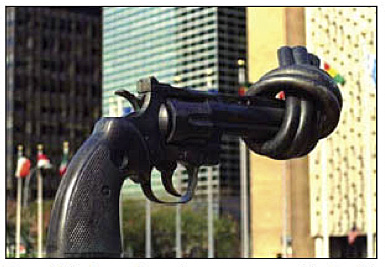
The truth is that although the UN Small Arms Treaty has failed to materialize because of the inability of negotiators to reach a consensus this time around, according to GOA, “it would be a mistake to believe that it spells the end of the effort to regulate small arms worldwide.” Indeed, for years the UN has been trying to formalize a global, civilian disarmament treaty with the intention of circumventing the Second Amendment rights of American gun owners. After all, the UN has dictated national policy to other sovereign nations as it regards environmental, criminal, and even global tax issues, so why not gun control? [Figure 6] So the struggle to preserve the right to gun ownership is an ongoing effort, even for those who already possess it.
CITIZENSHIP AND THE BENEFICIAL ASPECT OF GUN OWNERSHIP
Laws that forbid the carrying of arms. disarm only those who are neither inclined nor determined to commit crimes. Such laws make things worse for the assaulted and better for the assailants; they serve rather to encourage than to prevent homicides, for an unarmed man may be attacked with greater confidence than an armed man.
— Italian Criminologist Cesare Beccaria, “On Crimes and Punishment,” quoted in
Thomas Jefferson’s Literary Commonplace Book.
Scholarship published in the criminologic, sociologic, and legal literature in the last 30 years show that the defensive uses of firearms by citizens amount to 2.5 million uses per year and dwarf the offensive gun uses by criminals. In the United States, between 25 and 75 lives are saved by a gun in self and family protection for every life lost to a gun in crime.[38] Medical costs saved by guns in the hands of law‑abiding citizens are 15 times greater than costs incurred by criminal uses of firearms. Guns also prevent injuries to good people and protect billions of dollars of property every year.[13,29,30,38,39,41]
Moreover, the actual U.S. health care costs of treating gunshot wounds is approximately $1.5 billion, which is less than 0.2% of the U.S. annual health care expenditures. The $20–40 billion figure so frequently cited in the medical literature has been found to be a deliberate and exaggerated estimate of lifetime productivity lost, where every victim of crime is assumed that had not his life ended untimely he would have become a wealthy successful citizen. Reality points otherwise: Many “victims” are criminal elements who have been killed in the act of perpetrating serious crimes, either by the police or by law‑abiding citizens acting in self‑defense.[9,10,13,38,39]
In a 1986 New England Journal of Medicine (NEJM) paper, Drs. Arthur Kellermann and Donald T. Reay claimed that defending oneself or one’s family with a firearm in the home is dangerous and counterproductive, noting that, “a gun owner is 43 times more likely to kill a family member than an intruder.”[28] This conclusion, though, was severely criticized by numerous investigators, who had not only discerned evidence of methodological and conceptual errors in the study, but also found that the authors, most significantly, had failed to consider and underestimated the protective benefits of guns.[13,32,38,39] These and other serious deficiencies, stemming not only from methodological errors but also from political partisanship, have been noted in the standard public health model, which has also erroneously assumed that guns are a disease that must be eradicated in order to combat crime and promote what public health researchers deem desirable gun control laws.[3,9,10,13‑19,27,38,43]
On the other hand, Professor John R. Lott, Jr., using the standard criminologic approach, reviewed the FBI’s massive yearly crime statistics for all 3054 U.S. counties over 18 years (1977–1994), the largest national survey on gun ownership and state police documentation in illegal gun use. The data show that while neither state waiting periods nor the federal Brady Law is associated with a reduction in crime rates, adopting concealed carry gun laws that allowed law‑abiding citizens to carry concealed weapons for self‑defense cut death rates from public, multiple shootings (e.g. as those which took place in 1996 in Dunblane, Scotland, and Tasmania, Australia or the infamous 1999 Columbine High School shooting in Littleton, Colorado in the United States) — by an amazing 69%. Allowing law‑abiding citizens to carry concealed weapons deters violent crime — without any apparent increase in accidental death. In Professor Lott’s survey, children 14–15 years of age were found to be 14.5 times more likely to die from automobile injuries, 5 times more likely to die from drowning or fires and burns, and 3 times more likely to die from bicycle accidents than they are to die from gun accidents.[34]
In the United States, if states without concealed carry gun laws had adopted them in 1992, about 1570 murders, 4177 rapes, and 60,000 aggravated assaults would have been avoided annually. Moreover, when concealed carry gun laws went into effect in a given county, murders fell by 8%, rapes by 5%, and aggravated assaults by 7%.[34]
For this important, groundbreaking research, Professor Lott has received the accolades he certainly deserves both from his peers in the social sciences and from the freedom‑loving citizens of the United States. Nevertheless, his work and findings need wider dissemination among the people, as well as the elected representatives, of the emerging democracies of the world at large, who are still not aware of his work and freedom‑promoting message.
In Part II of “America, Guns and Freedom,” this essay will conclude with the experience of the United States in juxtaposition with the rest of the world in terms of the experience of violence with firearms, multiple and accidental shootings, the relationship of guns and suicide, and perhaps most troubling of all — the relationship of civilian disarmament to the development of tyrannical governments and genocide. In a better light, Part II of this essay will end with a discussion of how armed citizens can preserve their freedom and republican form of self‑government, more commonly referred to as representative democracy.
REFERENCES
1. Adams L. The Second Amendment Primer: A Citizen’s Guidebook to the History, Sources, and Authorities for the Constitutional Guarantee of the Right to Keep and Bear Arms. Birmingham, AL: Palladium Press;1996.
2. Amar AR. The bill of rights and the fourteenth amendment. Yale Law J 1992;101:1193‑284.
3. Bennett JT, DiLorenzo TJ. From Pathology to Politics: Public Health in America. New Brunswick, NJ: Transaction Publishers; 2000.
4. Blejwas S. A heroic uprising in Poland and Kojder A, Wegierski M. The Role of Poland and the Poles in World War II. The Polish American Journal, August 2004. Available from: . [Last accessed on 2004 Aug 15].
5. Clark J. Cuba, Mito y Realidad — Testimonios de un Pueblo. Saeta Ediciones. 2nded. 1992.
6. Edelman M. The Ghetto Fights: Warsaw, 1941–43. London, England: Bookmarks Publications;1990.
7. Encinosa E. Cuba en Guerra — Historia de la Oposicion Anti‑Castrista 1959‑1993. Miami, FL: The Endowment for Cuban American Studies;1994.
8. Faria MA Jr. Cuba in Revolution — Escape from a Lost Paradise. Macon, GA, Hacienda Publishing; 2002. . [Last accessed on 2002 Jun 14].
9. Faria MA Jr. Public health and gun control — A review (Part I): The benefits of firearms. Medical Sentinel 2001;6:14‑8. Available from: . [Last accessed 2001 Apr 1].
10. Faria MA Jr. Public health and gun control — A review (Part II): Gun violence and constitutional issues. Medical Sentinel 2001;6:11‑3. Available from:
11. Faria MA Jr. The Second Amendment — Reaching a consensus as an individual right. Medical Sentinel 2000;5:213‑4. Available from: .
12. Faria MA Jr. Gunrunning ATF runs amok! GOPUSA. Available from:
[Last accessed on 2011 Jul 18].
13. Faria MA Jr. The perversion of science and medicine (Part I): On the nature of
science; (Part III): Public health and gun control research; and (Part IV): The battle
continues. Medical Sentinel 1997;2:46‑53. and Medical Sentinel 1997; 2:81‑86. See also: Amicus Brief No. 07-290 IN THE Supreme Court of the United States DISTRICT OF COLUMBIA, ET AL., Petitioners, v. DICK ANTHONY HELLER, Respondent. On Writ of Certiorari to the United States Court of Appeals for the District of Columbia Circuit. , February 7, 2008.
14. Faria MA Jr. Public health — From science to politics. Medical Sentinel 2001;6:46‑9. Available from: .
15. Faria MA Jr. The perversion of science and medicine (Part II): Soviet science and gun control. Medical Sentinel1997;2:49‑53.Available from: .
16. Faria MA Jr. Statistical malpractice — ’Firearm availability’ and violence (Part I): Politics or science? Medical Sentinel 2002;7:132‑3. Available from:
17. Faria MA Jr. Statistical malpractice — ’Firearm availability’ and violence (Part II): Poverty, education and other socioeconomic factors. NewsMax.com. Available from: . [Last accessed on 2002 Mar 25].
18. Faria MA Jr. Part I: Public health, social science, and the scientific method. Surgical Neurology 2007;67:211‑4. Available from:
19. Faria MA Jr. Part II: Public health, social science, and the scientific method. Surgical lNeurology 2007;67:318‑22. Available from:
20. Gun Owners of America (GOA). Help Gun Owners of America stop the UN’s continuous attempts to destroy the 2nd Amendment. Available from: . [Last accessed on 2012 Jul 31].
21. Halbrook SP. That Every Man Be Armed — The Evolution of a Constitutional Right. Albuquerque, NM: University of New Mexico Press; 1984.
22. Halbrook SP. The right to bear arms in the first state Bills of Rights: Pennsylvania, North Carolina, Vermont, and Massachusetts. Vermont Law Review: 1985;10:255‑320.
23. Halbrook SP. The right of the people or the power of the state: Bearing arms, arming militias, and the second amendment. Valparaiso Law Review 1991;26:131‑207. Available from: .
24. Hardy DT. Armed citizens, citizen armies: Toward a jurisprudence of the second amendment. Harvard Journal of Law and Public Policy: 1986, p. 559‑638.
25. Holocaust Encyclopedia. Hungary After the German Occupation. United States Holocaust Memorial Museum, Washington, D.C. Available from: .
26. Kates D. The second amendment: A dialogue. Law and Contemporary Problems; 1986, p. 143.
27. Kates DB, Schaffer HE, Lattimer JK, Murray GB, Cassem EH. Guns and public health: Epidemic of violence or pandemic of propaganda? Tennessee Law Review 1995;62:513‑96. Available from: . [Last accessed 1995 Apr 1]
28. Kellermann AL, Reay DT. Protection or peril? An analysis of firearm‑related deaths in the home. N Engl J Med 1986;314:1557‑60.
29. Kleck G. Point Blank — Guns and Violence in America. Hawthorne, NY: Aldine de Gruyter; 1991.
30. Kleck G. Targeting Guns — Firearms and Their Control. Hawthorne, NY: Aldine de Gruyter; 1997.
31. Kopel DB. The Samurai, the Mountie, and the Cowboy: Should America Adopt the Gun Controls of Other Democracies? Buffalo, New York, NY: Prometheus Books; 1992.
32. Kopel DB. “Children and Guns” in Guns, Who Should Have Them. New York, NY: Prometheus Books; 1995, p. 309‑443.
33. Levinson S. The embarrassing second amendment. Yale Law J 1989;99:637‑59.
34. Lott JR Jr. More Guns, Less Crime — Understanding Crime and Gun Control Laws. Chicago, IL: University of Chicago Press; 1998.
35. Pratt L. Safeguarding Liberty — The Constitution and Citizen Militias. Franklin, TN; Legacy Communications; 1995.
36. Reynolds GH. The right to keep and bear arms under the Tennessee constitution. Tennessee Law Review; 1994;61:2.
37. Story J. Commentaries on the Constitution of the United States (1830) quoted in The Second Amendment Primer by Les Adams. Birmingham, AL: Palladium Press; 1996.
38. Suter E. Guns in the medical literature — A failure of peer review. J Med Assoc Ga 1994;83:137‑48. Available from:
39. Suter E, Waters WC, Murray GB, Hopkins CB, Asiaf J, Moore JB, et al. Violence in America — Effective solutions. J Med Assoc Ga 1995;84:253‑63. Available from:
40. Van Alstyne W. The second amendment and the personal right to arms. Duke Law Journal; 1994;43:1236‑55.
41. Waters RA. The Best Defense — True Stories of Intended Victims Who Defended Themselves With a Firearm. Nashville, TN: Cumberland House; 1998.
42. Wdowiński D. And We Are Not Saved. New York, NY: Philosophical Library; 1963.
43. Wheeler T. Boundary violations — Gun politics in the doctor’s office. Med Sentinel 1999;4:60. . [Last accessed on 1999 Mar 1]
Written by Dr. Miguel Faria
Miguel A. Faria, Jr., M.D. is Clinical Professor of Surgery (Neurosurgery, ret.) and Adjunct Professor of Medical History (ret.) Mercer University School of Medicine. He is an Associate Editor in Chief and a World Affairs Editor of Surgical Neurology International (SNI), and an Ex-member of the Injury Research Grant Review Committee of the Centers for Disease Control and Prevention (CDC). 2002-05; Former Editor-in-Chief of the Medical Sentinel (1996-2002), Editor Emeritus, the Association of American Physicians and Surgeons (AAPS); Author, Vandals at the Gates of Medicine (1995); Medical Warrior: Fighting Corporate Socialized Medicine (1997); and Cuba in Revolution: Escape From a Lost Paradise (2002).
This article was originally published in Surgical Neurology International and may be cited as: Faria MA. America, guns, and freedom. Part I: A recapitulation of liberty. Surg Neurol Int 2012;3(1):133. Available from: http://surgicalneurologyint.com/surgicalint_articles/america-guns-and-fr…
Copyright © 2012 Miguel A. Faria, Jr., MD